Eighth Article in Secular Woman's Women's History Month Ariticle Series
By Renée Neary, of NiftyIdeas

And if you were to be forgotten as an artist, would you not be beloved as a wife?
I came across this google doodle while researching material for my article for Women's History month. When Google created the doodle to celebrate the birthday of Clara Schumann last September, the irony of the picture was probably unintended. The lovely image of a serene-looking woman surrounded by a boisterous group of children is both appealing and insightful. The picture is whimsical and delightful but, when viewed through the prism of the historical experience of creative women, there is a disturbing subtext. The viewer's first impression of the woman pictured is not of an acclaimed musical genius, but of a mother. Although Clara Wieck Schumann was a world-renowned concert pianist whose career spanned over 60 years and whose influence is still felt today in concert repertoire, the piano keyboard which forms the bottom border of the doodle almost seems like an afterthought. The focal point of the doodle is a woman so thoroughly surrounded by her children that they are literally hanging off her body and hampering her freedom of movement. Even a woman like Clara Schumann, who had managed to carve out a bit of personal fame in a thoroughly masculine world, was ultimately depicted primarily in the role which her patriarchal culture insisted was the only legitimate one for women. As an illustration of the recurring motif in women's history, this google doodle really fits the bill.
Maria Anna Mozart (30 July 1751 – 29 October 1829), a child prodigy like her younger brother Wolfgang Amadeus Mozart, was a musician of uncommon ability. Before her artistic opportunities were abruptly cut off, it was Maria Anna, not Wolfgang, who often received top billing at the Mozart family recitals performed in Salzburg and more than 80 other European cities in the second half of the 18th century. By the time she was 11 years old, contemporary music critics were marveling at the perfection of her technique, reporting that her performances were "masterly". Her father, Leopold, had begun instructing her in music at the age of 7 or 8 and some of his surviving letters mention his pride and astonishment at her talent.
.jpg) My little girl plays the most difficult works which we have … with incredible precision and so excellently,” her father, Leopold, wrote in a letter in 1764. “What it all amounts to is this, that my little girl, although she is only 12 years old, is one of the most skillful players in Europe. Maria Anna Mozart: The Family's First Prodigy, Elizabeth Rusch, Smithsonian.com, March 28, 2011.
My little girl plays the most difficult works which we have … with incredible precision and so excellently,” her father, Leopold, wrote in a letter in 1764. “What it all amounts to is this, that my little girl, although she is only 12 years old, is one of the most skillful players in Europe. Maria Anna Mozart: The Family's First Prodigy, Elizabeth Rusch, Smithsonian.com, March 28, 2011.
It was because of Maria Anna's influence on the young Wolfgang that his talents came to light at a very young age and it was because of the children's musical interaction that Leopold decided to begin Wolfgang's musical instruction much earlier than was customary – probably greatly increasing Wolfgang's ability to develop his musical aptitude. Nannerl, as Maria Anna was called by her brother, is known to have transcribed some of Mozart's earliest compositions (before he knew how to write music himself) and it is highly likely that she collaborated with him on some pieces. She composed works of her own, as well.
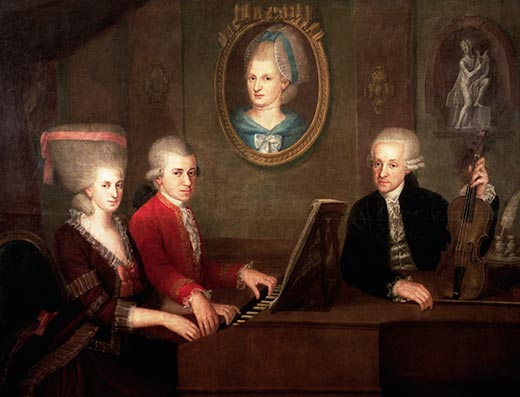 However, careers in musical composition (like any other career) were forbidden to young women in the 18th century – even for a girl described as a "prodigy", "virtuoso" and "genius" by the 18th century men who had been in a position to evaluate her talent. When young Wolfgang innocently announced after a performance one day that the composition they had just played was Maria Anna's, their father was scandalized. He ordered his daughter never to compose again.
However, careers in musical composition (like any other career) were forbidden to young women in the 18th century – even for a girl described as a "prodigy", "virtuoso" and "genius" by the 18th century men who had been in a position to evaluate her talent. When young Wolfgang innocently announced after a performance one day that the composition they had just played was Maria Anna's, their father was scandalized. He ordered his daughter never to compose again.
While Maria Anna obeyed her father's – and society's – command that she retire from performing after she reached marriageable age and devote herself to more "womanly" pursuits (marriage, raising children and keeping house), it is known from Wolfgang's letters that she continued to compose in private throughout her life. It is possible that another Mozart might very well have contributed musical gifts to humankind that could have rivaled those of her celebrated brother, but we will never know for sure because not a single piece of her work was saved. She disappeared from public life and would have disappeared forever from history had she not been the sister of a very famous man who happened to mention her work in his letters.
.jpg) What must it have done to this hugely talented woman to have been forced to give up all hopes and dreams of a musical career? Mozart's biographers usually mention that he and Nannerl drifted apart in adulthood – and that she is believed to have suffered from depression after her marriage – but the reason why this might have happened apparently arouses little curiosity and even less scholarly consideration. Even an armchair psychologist could probably discern that the frustration and emotional pain of being forced to suppress her enormous talent very likely resulted in bouts of depression as well as some unavoidable jealousy which could have contributed to the distance which grew between the once-close siblings. Maria Anna had to watch her younger brother receive the support and encouragement from their family that she herself had been cruelly denied, and as his renown increased, it is easy to imagine that Nannerl's painful frustration probably did, too.
What must it have done to this hugely talented woman to have been forced to give up all hopes and dreams of a musical career? Mozart's biographers usually mention that he and Nannerl drifted apart in adulthood – and that she is believed to have suffered from depression after her marriage – but the reason why this might have happened apparently arouses little curiosity and even less scholarly consideration. Even an armchair psychologist could probably discern that the frustration and emotional pain of being forced to suppress her enormous talent very likely resulted in bouts of depression as well as some unavoidable jealousy which could have contributed to the distance which grew between the once-close siblings. Maria Anna had to watch her younger brother receive the support and encouragement from their family that she herself had been cruelly denied, and as his renown increased, it is easy to imagine that Nannerl's painful frustration probably did, too.
Another woman whose existence has thankfully been remembered was another musical prodigy whose talent eclipsed that of her famous younger brother in their early years. Fanny Mendelssohn (14 November 1805 – 14 May 1847), eldest child in a distinguished Hamburg family, exhibited both a passion for and outstanding ability in music at a young age. Visitors to the Mendelssohn's salons usually expressed equal admiration for both Felix and Fanny but composer Carl Friedrich Zelter (who instructed the Mendelssohn children in music) recognized Fanny's artistic genius and singled her out for high praise.
 He (Abraham Mendelssohn) has adorable children and his oldest daughter could give you something of Sebastian Bach. This child is really something special" Carl Friedrich Zelter (Fanny Mendelssohn's music teacher), in a letter to Goethe, 1816.
He (Abraham Mendelssohn) has adorable children and his oldest daughter could give you something of Sebastian Bach. This child is really something special" Carl Friedrich Zelter (Fanny Mendelssohn's music teacher), in a letter to Goethe, 1816.
Although it has been established by music historians that Fanny's virtuosity at least equalled and possibly even surpassed her famous brother Felix's, the strict rules of society circumscribed her artistic horizons just as it limited the opportunities for intellectual and creative fulfillment for all women. While under her father's control, her only creative outlets were her performances at private homes in front of small groups of trusted friends and family members. Fanny's sole documented public performance was for a charity benefit in 1838 where she played her brother's first piano concerto.
Unlike Maria Anna Mozart, however, Fanny Mendelssohn and her acclaimed brother remained close throughout their lives. This may have been partly due to the fact that Felix never failed to seek Fanny's expert opinion on his own compositions and he followed her advice when she recommended revisions. There is some evidence that they may have collaborated on some works, too, including an opera. The sincere respect that Felix showed his sister no doubt helped to secure their sibling bond even after any hope of pursuing her own musical aspirations that Fanny may have had were bluntly dashed by their father.
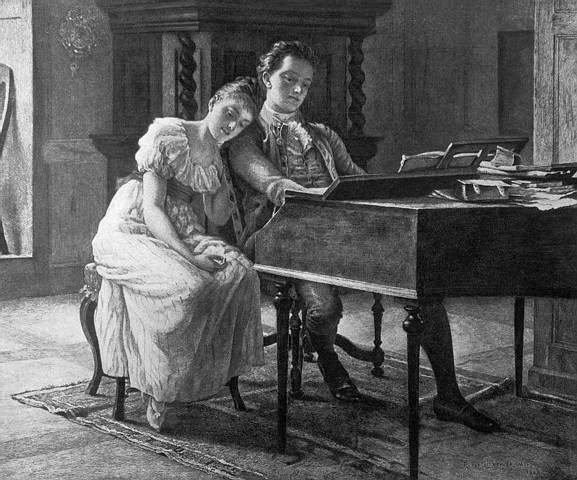 Music will perhaps become his (Felix's) profession, while for you it can and must be only an ornament, never the basis of your being and doing. Abraham Mendelssohn-Bartholdy, in a letter to his daughter Fanny, 16 July, 1820
Music will perhaps become his (Felix's) profession, while for you it can and must be only an ornament, never the basis of your being and doing. Abraham Mendelssohn-Bartholdy, in a letter to his daughter Fanny, 16 July, 1820
Fanny was also fortunate in that she married a man who encouraged her to continue to compose music – her husband, Wilhelm Hensel was an artist who often illustrated her musical compositions. Reviving a family tradition begun by her great aunts and continued by her own parents, Fanny was able to perform these works alongside her brother's at private salons she hosted at their home in Berlin. The general public, however, disapproved of the idea of a woman composer, so Fanny's talents were rarely on display to any wider audience. On a couple of occasions, however, Felix had some of her songs published under his name.
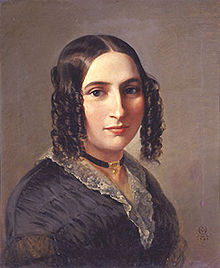 Although no musical profession was considered a suitable occupation for women during most of her lifetime, toward the second half of the nineteenth century attitudes had begun to gradually shift and Fanny had the joy of being one of the first women to have any of her compositions published. During her short, prolific lifetime, Fanny Mendelssohn Hensel produced over five hundred musical works, of which a handful were published before her death in 1847.
Although no musical profession was considered a suitable occupation for women during most of her lifetime, toward the second half of the nineteenth century attitudes had begun to gradually shift and Fanny had the joy of being one of the first women to have any of her compositions published. During her short, prolific lifetime, Fanny Mendelssohn Hensel produced over five hundred musical works, of which a handful were published before her death in 1847.
Biographical blurbs about famous people tend to gloss over the real life challenges experienced by their subjects. Rattling off a list of accomplishments in the glib language of academia often inadvertently conveys a false sense that the person's life was a neatly knotted string of isolated wins along a lifespan were laughing, crying, living and dying were merely blips along the way. But, when one takes the time to read between the lines and think about the events in a life – the brief references to pregnancies, childrens’ births and deaths, illnesses and upheavals; the casual mentioning of war, plagues and economic turmoil – it is impossible not to realize that human lives are more like a tapestry of interconnected relationships and momentous events.
An accomplished person’s “wins” could have been thanks to or in spite of some of those relationships or events, but they are never unaffected by what is occurring in the rest of a person’s life. Notable women in history were no exception to this, but there is still a tendency to report their contributions and achievements as if they occurred in a vacuum.
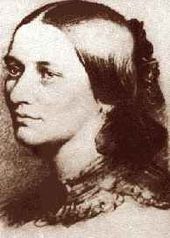 Composing gives me great pleasure… there is nothing that surpasses the joy of creation, if only because through it one wins hours of self-forgetfulness, when one lives in a world of sound. —Clara Wieck Schumann
Composing gives me great pleasure… there is nothing that surpasses the joy of creation, if only because through it one wins hours of self-forgetfulness, when one lives in a world of sound. —Clara Wieck Schumann
Clara Wieck (13 September 1819 – 20 May 1896), was yet another musical prodigy whose ability to develop her prodigious talent as a pianist and composer was abruptly curtailed upon her arrival at young womanhood. We know about her thanks to her marriage to Robert Schumann, a less accomplished pianist than Clara was, but a gifted composer who went on to enjoy considerable acclaim, largely thanks to Clara's promotion of his works.
Clara Wieck Schumann bore eight children within thirteen years, and eventually became the main breadwinner for her family as her husband withdrew deeper into music while battling his psychological demons. While raising her large brood (virtually alone because of Robert's illness), she resumed her performing career to support the family, and was instrumental – some would say indispensable – in introducing and popularizing Robert's compositions in European society.
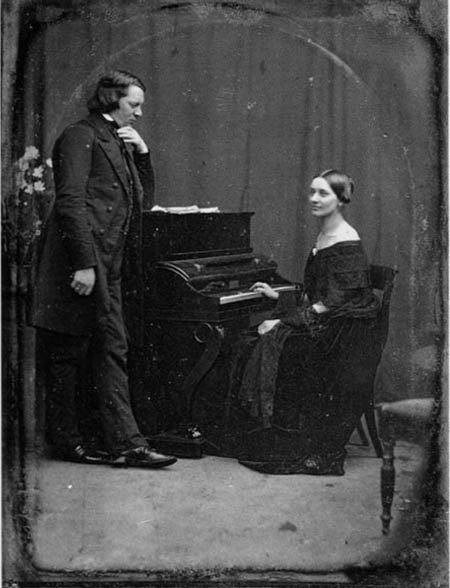 Clara has composed a series of small pieces, which show a musical and tender ingenuity such as she has never attained before. But to have children, and a husband who is always living in the realm of imagination, does not go together with composing. She cannot work at it regularly, and I am often disturbed to think how many profound ideas are lost because she cannot work them out. – Robert Schumann
Clara has composed a series of small pieces, which show a musical and tender ingenuity such as she has never attained before. But to have children, and a husband who is always living in the realm of imagination, does not go together with composing. She cannot work at it regularly, and I am often disturbed to think how many profound ideas are lost because she cannot work them out. – Robert Schumann
The domestic challenges and responsibilities that she faced and conquered are testimony to Clara's inner fortitude but she was not just a strong and capable wife, mother, business woman and concert pianist. She was gutsy as well. There is a famous story that during the May Uprising in Dresden in 1849, Clara faced down a mob of armed men, walked into the city through the front lines to rescue her children and walked right back out again through the same, undoubtedly astonished, line of revolutionaries. All this, while she was seven months pregnant with her son, Ferdinand.
It has been noted by some of her biographers that Clara Schumann "lost confidence" in her ability to compose as she got older and that her output virtually ceased when she was about 36 years old. What is rarely mentioned is that an enormously significant event occurred in Clara's life during this time which almost certainly contributed to her loss of confidence. Her husband, Robert, who had been mentally ill for years, attempted suicide in 1854 and had himself committed to an asylum where he remained until his death two years later.
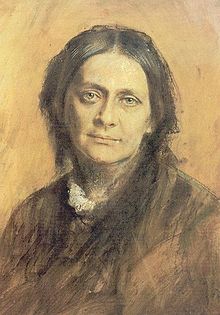 I once believed that I possessed creative talent, but I have given up this idea; a woman must not desire to compose — there has never yet been one able to do it. Should I expect to be the one? – Clara Schumann
I once believed that I possessed creative talent, but I have given up this idea; a woman must not desire to compose — there has never yet been one able to do it. Should I expect to be the one? – Clara Schumann
Faced with the reality that what they had been pretending was a 'supplementary' income was actually the only income upon which her family could rely, Clara resumed her performing career in earnest. Raising seven surviving children, managing her household and expenses, maintaining a rigorous performance schedule with concerts all over Europe and coping with the loneliness of the loss of her beloved partner, is it really surprising that her ability to compose had suffered? One wonders how she managed to juggle so many responsibilities at all: Clara did the work of several people and she did it very successfully. Although she certainly never again had the emotional and physical leisure to devote to composing, in her later life Clara Wieck Schumann earned a reputation as one of the greatest pianists of her generation, and her influence upon recital repertory persists to the present day.
Maria Anna Mozart, Fanny Mendelssohn and Clara Wieck belong to a small but distinguished company of hugely talented women whose existence we only know about because they were connected in some way to famous men. While their accomplishments were severely limited by the strictures of patriarchal society, they were nevertheless the lucky ones.
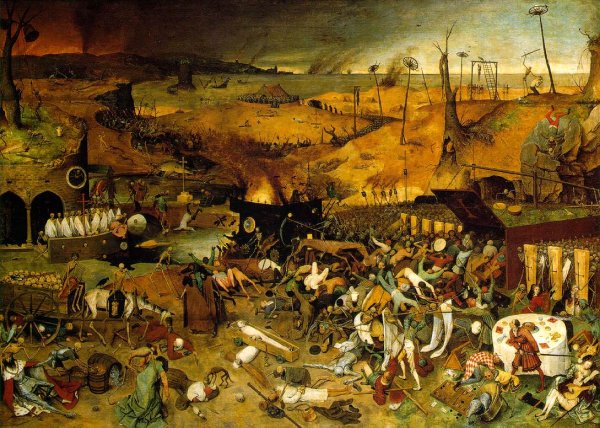 Life, as Thomas Hobbes so memorably said, was 'solitary, poor, nasty, brutish and short' for most people for most of human history. Only when the terrible burden of eking out a living is lifted are most people able to turn their attention to intellectual or artistic pursuits, which is why intellectual and artistic greatness has always been almost exclusively the province of the wealthy.
Life, as Thomas Hobbes so memorably said, was 'solitary, poor, nasty, brutish and short' for most people for most of human history. Only when the terrible burden of eking out a living is lifted are most people able to turn their attention to intellectual or artistic pursuits, which is why intellectual and artistic greatness has always been almost exclusively the province of the wealthy.
It is a reality that the vast majority of extraordinary human beings never enjoy great fame and are not remembered – not even by their kith and kin – beyond a generation or two. World renown and the opportunity to achieve it has always been mainly the privilege of wealthy or powerful men. Poverty, sickness, brutal living conditions and lack of education have robbed humanity of the chance to have known the potential contributions of more than 95% of all the people who have ever lived. This tragic loss has been universal, affecting both men and women in every region of the world in every century.
In very rare cases, a talented poor man might get very lucky. If he managed to bring his talent to the notice of a powerful man – if he succeeded in gaining the patronage of a nobleman, bishop or king – then even a lowly peasant might have had a chance to rise up out of obscurity. For gifted women, however, there were virtually no available avenues out of obscurity. Poor women worked as hard as poor men, bearing and nurturing children, growing and gathering food to feed their families, struggling for survival. Like their male counterparts, poor women lived a hand-to-mouth existence from the cradle to the grave, but unlike men they almost never even had the chance of becoming the charitable project of a wealthy patron due to the oppressive societal mores which restricted the freedom of "respectable" girls and women. To do so would reduce a poor woman to the status of a prostitute or worse, and her life would be ruined anyway.
 The situation was little better for women born into wealthy circumstances. All wealth and property was owned by their male relatives so no woman ever possessed the kind of personal wealth which might have conferred some independence and freedom to pursue creative dreams. A noblewoman who attempted to defy patriarchal rules of feminine conduct could very well have found herself disowned by her family and out on the street. She was expected to embrace marriage and motherhood and what is more, she was expected to be satisfied with whatever contentment could be found there and expect nothing more. Robert Schumann expressed this when he wrote to Clara, “And if you were to be forgotten as an artist, would you not be beloved as a wife?"
The situation was little better for women born into wealthy circumstances. All wealth and property was owned by their male relatives so no woman ever possessed the kind of personal wealth which might have conferred some independence and freedom to pursue creative dreams. A noblewoman who attempted to defy patriarchal rules of feminine conduct could very well have found herself disowned by her family and out on the street. She was expected to embrace marriage and motherhood and what is more, she was expected to be satisfied with whatever contentment could be found there and expect nothing more. Robert Schumann expressed this when he wrote to Clara, “And if you were to be forgotten as an artist, would you not be beloved as a wife?"
While both men and women were permitted to share in the joys and tribulations of parenthood, the intellectual satisfaction of education and the challenge of explorations in art, science and philosophical ideas were strictly reserved for men. Women's intellectual or artistic aspirations were barely acknowledged, and the emotional toll of their deprivation was attributed to female hysteria. In essence, patriarchal culture reduced women to little more than the status of animals – human broodmares whose only valued function was reproduction. Indeed, it was not until the last century that the church recognised that women have souls. Women were, quite literally, considered to be no better than animals. As the property of their male relatives, powerless and penniless, women have been forced by patriarchal culture for thousands of years to make the only viable "choice" available to them after puberty – retirement into marriage, motherhood and almost always, inevitably – invisibility.
The world of music, art and intellectual pursuits has been the jealously guarded world of men for most of human history, while the talents, hopes and dreams of women have been largely suppressed, ignored and dismissed. During Women's History Month, we celebrate the great strides that women have made in the last century, while paying homage to the remarkable women who managed to overcome almost overwhelming social obstacles to make their mark in history.


.jpg) My little girl plays the most difficult works which we have … with incredible precision and so excellently,” her father, Leopold, wrote in a letter in 1764. “What it all amounts to is this, that my little girl, although she is only 12 years old, is one of the most skillful players in Europe.
My little girl plays the most difficult works which we have … with incredible precision and so excellently,” her father, Leopold, wrote in a letter in 1764. “What it all amounts to is this, that my little girl, although she is only 12 years old, is one of the most skillful players in Europe.  However, careers in musical composition (like any other career) were forbidden to young women in the 18th century – even for a girl described as a "prodigy", "virtuoso" and "genius" by the 18th century men who had been in a position to evaluate her talent. When young Wolfgang innocently announced after a performance one day that the composition they had just played was Maria Anna's, their father was scandalized. He ordered his daughter never to compose again.
However, careers in musical composition (like any other career) were forbidden to young women in the 18th century – even for a girl described as a "prodigy", "virtuoso" and "genius" by the 18th century men who had been in a position to evaluate her talent. When young Wolfgang innocently announced after a performance one day that the composition they had just played was Maria Anna's, their father was scandalized. He ordered his daughter never to compose again..jpg) What must it have done to this hugely talented woman to have been forced to give up all hopes and dreams of a musical career? Mozart's biographers usually mention that he and Nannerl drifted apart in adulthood – and that she is believed to have suffered from depression after her marriage – but the reason why this might have happened apparently arouses little curiosity and even less scholarly consideration. Even an armchair psychologist could probably discern that the frustration and emotional pain of being forced to suppress her enormous talent very likely resulted in bouts of depression as well as some unavoidable jealousy which could have contributed to the distance which grew between the once-close siblings. Maria Anna had to watch her younger brother receive the support and encouragement from their family that she herself had been cruelly denied, and as his renown increased, it is easy to imagine that Nannerl's painful frustration probably did, too.
What must it have done to this hugely talented woman to have been forced to give up all hopes and dreams of a musical career? Mozart's biographers usually mention that he and Nannerl drifted apart in adulthood – and that she is believed to have suffered from depression after her marriage – but the reason why this might have happened apparently arouses little curiosity and even less scholarly consideration. Even an armchair psychologist could probably discern that the frustration and emotional pain of being forced to suppress her enormous talent very likely resulted in bouts of depression as well as some unavoidable jealousy which could have contributed to the distance which grew between the once-close siblings. Maria Anna had to watch her younger brother receive the support and encouragement from their family that she herself had been cruelly denied, and as his renown increased, it is easy to imagine that Nannerl's painful frustration probably did, too. He (Abraham Mendelssohn) has adorable children and his oldest daughter could give you something of Sebastian Bach. This child is really something special" Carl Friedrich Zelter (Fanny Mendelssohn's music teacher), in a letter to Goethe, 1816.
He (Abraham Mendelssohn) has adorable children and his oldest daughter could give you something of Sebastian Bach. This child is really something special" Carl Friedrich Zelter (Fanny Mendelssohn's music teacher), in a letter to Goethe, 1816. Music will perhaps become his (Felix's) profession, while for you it can and must be only an ornament, never the basis of your being and doing. Abraham Mendelssohn-Bartholdy, in a letter to his daughter Fanny, 16 July, 1820
Music will perhaps become his (Felix's) profession, while for you it can and must be only an ornament, never the basis of your being and doing. Abraham Mendelssohn-Bartholdy, in a letter to his daughter Fanny, 16 July, 1820 Although no musical profession was considered a suitable occupation for women during most of her lifetime, toward the second half of the nineteenth century attitudes had begun to gradually shift and Fanny had the joy of being one of the first women to have any of her compositions published. During her short, prolific lifetime, Fanny Mendelssohn Hensel produced over five hundred musical works, of which a handful were published before her death in 1847.
Although no musical profession was considered a suitable occupation for women during most of her lifetime, toward the second half of the nineteenth century attitudes had begun to gradually shift and Fanny had the joy of being one of the first women to have any of her compositions published. During her short, prolific lifetime, Fanny Mendelssohn Hensel produced over five hundred musical works, of which a handful were published before her death in 1847. Composing gives me great pleasure… there is nothing that surpasses the joy of creation, if only because through it one wins hours of self-forgetfulness, when one lives in a world of sound. —Clara Wieck Schumann
Composing gives me great pleasure… there is nothing that surpasses the joy of creation, if only because through it one wins hours of self-forgetfulness, when one lives in a world of sound. —Clara Wieck Schumann Clara has composed a series of small pieces, which show a musical and tender ingenuity such as she has never attained before. But to have children, and a husband who is always living in the realm of imagination, does not go together with composing. She cannot work at it regularly, and I am often disturbed to think how many profound ideas are lost because she cannot work them out. – Robert Schumann
Clara has composed a series of small pieces, which show a musical and tender ingenuity such as she has never attained before. But to have children, and a husband who is always living in the realm of imagination, does not go together with composing. She cannot work at it regularly, and I am often disturbed to think how many profound ideas are lost because she cannot work them out. – Robert Schumann I once believed that I possessed creative talent, but I have given up this idea; a woman must not desire to compose — there has never yet been one able to do it. Should I expect to be the one? – Clara Schumann
I once believed that I possessed creative talent, but I have given up this idea; a woman must not desire to compose — there has never yet been one able to do it. Should I expect to be the one? – Clara Schumann Life, as Thomas Hobbes so memorably said, was 'solitary, poor, nasty, brutish and short' for most people for most of human history. Only when the terrible burden of eking out a living is lifted are most people able to turn their attention to intellectual or artistic pursuits, which is why intellectual and artistic greatness has always been almost exclusively the province of the wealthy.
Life, as Thomas Hobbes so memorably said, was 'solitary, poor, nasty, brutish and short' for most people for most of human history. Only when the terrible burden of eking out a living is lifted are most people able to turn their attention to intellectual or artistic pursuits, which is why intellectual and artistic greatness has always been almost exclusively the province of the wealthy. The situation was little better for women born into wealthy circumstances. All wealth and property was owned by their male relatives so no woman ever possessed the kind of personal wealth which might have conferred some independence and freedom to pursue creative dreams. A noblewoman who attempted to defy patriarchal rules of feminine conduct could very well have found herself disowned by her family and out on the street. She was expected to embrace marriage and motherhood and what is more, she was expected to be satisfied with whatever contentment could be found there and expect nothing more. Robert Schumann expressed this when he wrote to Clara, “And if you were to be forgotten as an artist, would you not be beloved as a wife?"
The situation was little better for women born into wealthy circumstances. All wealth and property was owned by their male relatives so no woman ever possessed the kind of personal wealth which might have conferred some independence and freedom to pursue creative dreams. A noblewoman who attempted to defy patriarchal rules of feminine conduct could very well have found herself disowned by her family and out on the street. She was expected to embrace marriage and motherhood and what is more, she was expected to be satisfied with whatever contentment could be found there and expect nothing more. Robert Schumann expressed this when he wrote to Clara, “And if you were to be forgotten as an artist, would you not be beloved as a wife?"